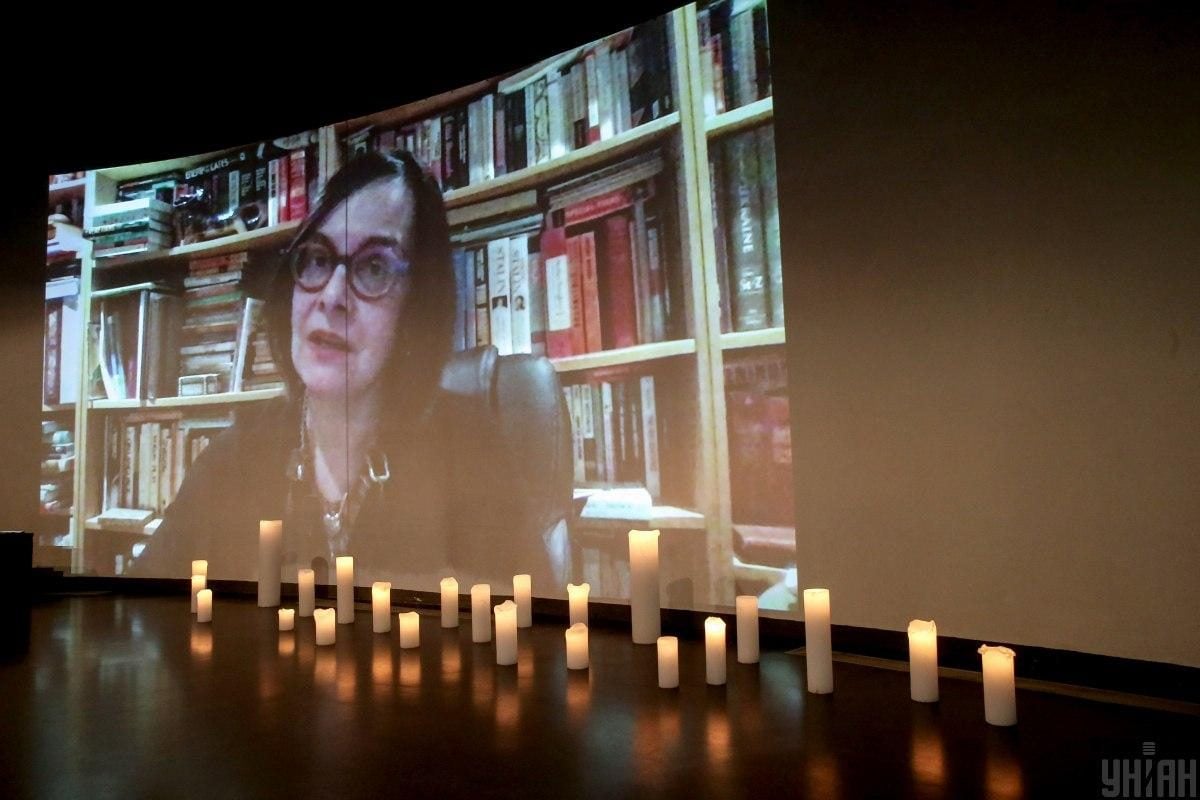
On November 20, the National Museum of the Holodomor-Genocide in Kyiv opened the exhibit "Maria" by Canadian artist and photographer of Ukrainian descent Lesia Maruschak.
Maria is one of the elements in a larger-scale multimedia art installation at the memorial site. The project honors the victims of the Holodomor of 1932-1933. The focus is on the portrait of a young girl Maria, who managed to survive and move to Canada, while millions of her compatriots died. The project features a book, an exhibition of images and installations, a film, and a series of lectures.
"This is the world's most famous exhibition about the Holodomor, which was presented in more than nine countries and will for the first time be showcased in Ukraine," the ad says.
It will be on display from November 20, 2020 to March 31, 2021 with the support of the Ukrainian World Congress.
In May 2019, Lesia Maruschak's art book "Maria" was granted the highest award at the International Book Arsenal Festival in Kyiv, and also entered the final list at the Athens Photobook Festival and the prestigious Prix du Livre, Recontres d'Arles in 2019 in France ... The Maria project was also presented in Paris within the framework of ParisArtistes and the prestigious Objectif FEMMES photo exhibit on October 4-6, 2019.
Read alsoUkraine's MFA urges int'l community not to turn a blind eye to Russia's censorship of historyHolodomor of 1932-33 in Ukraine
- In the 20th century, Ukrainians experienced three famines: 1921-1923, 1932-1933, and the famine of 1946-1947. However, the Holodomor of 1932-1933 was a particularly dark page in the tragic history of the Ukrainian people. According to various sources, in the years 1932-1933, from 4.5 to 10 million people died of artificial famine.
- On November 28, 2006, by law of Ukraine, the Holodomor of 1932-1933 was recognized as genocide of the Ukrainian people.
- On Day of Remembrance of Holodomor Victims, Ukrainians are traditionally called upon to honor the starved with a minute of silence or prayer, to attend a vigil, remembering their compatriots killed by the communist totalitarian regime.
Project MARIA: Details
Project MARIA memorializes victims of the 1932-33 Holodomor – famine-genocide – in Soviet Ukraine, where millions died, the artist tells on her personal website.
The Holodomor was political and intentional; a state-sponsored assault on a single ethnic group as part of the Soviet Union's new socio-economic model that required the subjugation of a sizable population whose national consciousness stood in the way of the new order.
Read alsoUkraine launches consultancy to help citizens find info on victims of Soviet repressionAt its center is a single vernacular image of a young girl, Maria F., who survived and currently resides in Canada.
Produced across platforms including books, installations, textile sculptures, performance, lectures and film, the project manifests the artist's "intellectual and emotional response, informed by current research and the survivors' stories"











